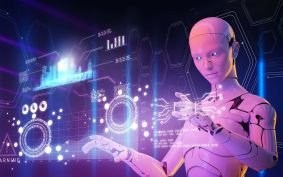Where should the digital transformation of a treasury department begin? That’s the issue currently occupying many treasurers’ minds. How can we use robots as part of the treasury process in order to gain in terms of efficiency, resources and security? This article aims to set out a gradual and logical approach to retro-fitting and further digitising an organisation. After all, the world is changing so swiftly that increased agility within a more flexible and finely tuned structure is an absolute must.
The path to digitisation
If they haven’t already done so, treasurers need to firmly commit to the ‘digitisation’ of their daily activities. The treasurer’s role is to make their organisation more resistant and more resilient, but that doesn’t just involve having a more efficient treasury management system (TMS). That will help, but it won’t suffice on its own. The treasury department’s IT architecture needs to be redefined as a whole, but that’s a long and complex road strewn with hazards, and often, there is no clear destination.
There’s no miracle cure or plan applicable to everyone, but unless action is taken now, greater operational efficiency will remain out of reach. Once existing systems have been optimised (e.g. TMS, Payment Factory and the other IT satellites and additional applications), the next stage is to install an Extract Transform Load (ETL) system in order to connect and consolidate data and add the missing layer of reporting required. This is the ideal way of bridging gaps in terms of reporting and functionality.
This phase can best be described as ‘IT consolidation’, designed to rectify any absences and deficiencies, especially in terms of financial reports. Such a customisation enables the development of dashboards and a full array of key performance indicators. This preliminary customisation stage of system consolidation and optimisation of processes and reports simply can’t be skipped. Once this layer is in place, the next step will be the deployment of robots in order to automate a series of processes.
Sign up for free to read the full article
Register Login with LinkedInAlready have an account?
Login
Download our Free Treasury App for mobile and tablet to read articles – no log in required.
Download Version Download Version


























